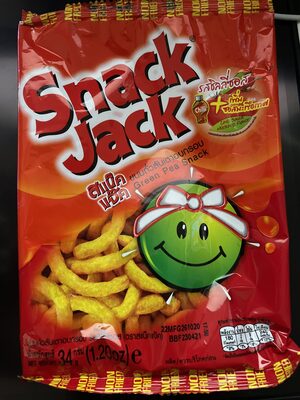สแน็คแจ๊ค รสชิลลี่ซอส - Snack jack - 34
This product page is not complete. You can help to complete it by editing it and adding more data from the photos we have, or by taking more photos using the app for Android or iPhone/iPad. Thank you!
×
Barcode: 8854923214202 (EAN / EAN-13)
Quantity: 34
Packaging: Bag
Brands: Snack jack
Categories: Plant-based foods and beverages, Plant-based foods, Legumes and their products, Snacks, Legumes
Countries where sold: Thailand
Matching with your preferences
Health
Food processing
Additives
Ingredients analysis
The analysis is based solely on the ingredients listed and does not take into account processing methods.
Serving size:
1
⚠
️Serving size is too small (5 g / 5 ml or less) to calculate 100 g / 100 ml values and perform any further nutritional analysis
Environment
Packaging
Transportation
Report a problem
Data sources
Product added on by openfoodfacts-contributors
Last edit of product page on by packbot.
Product page also edited by klongsolo.
If the data is incomplete or incorrect, you can complete or correct it by editing this page.








